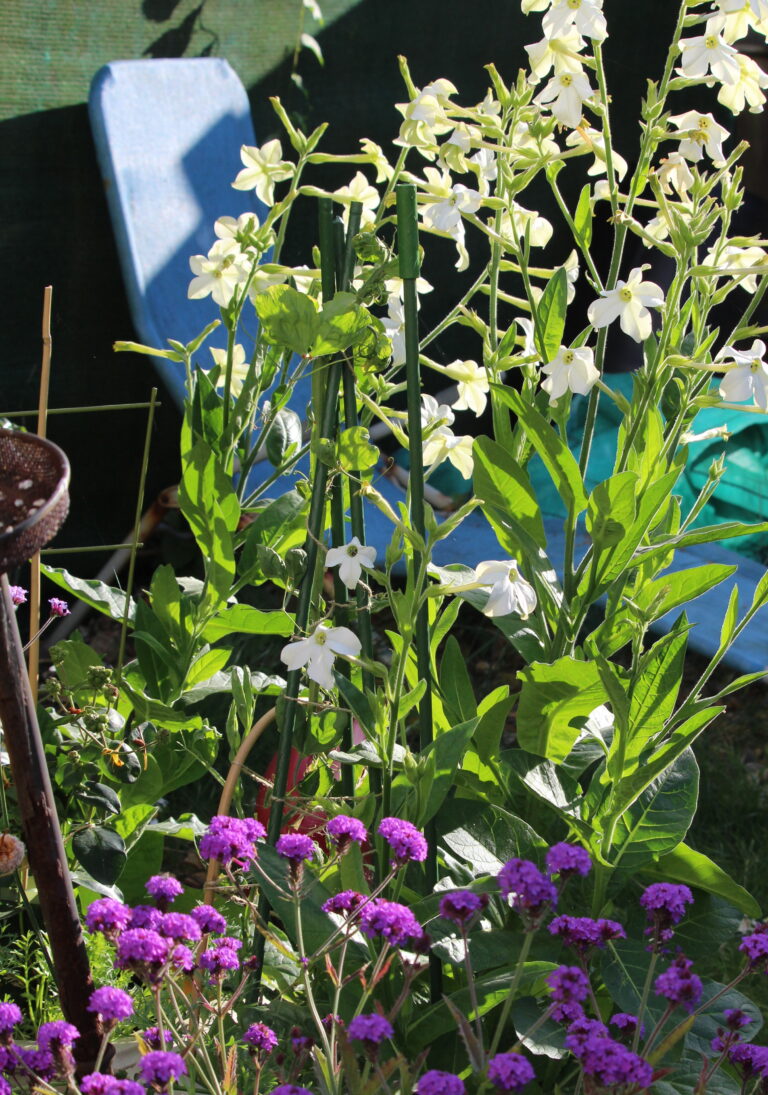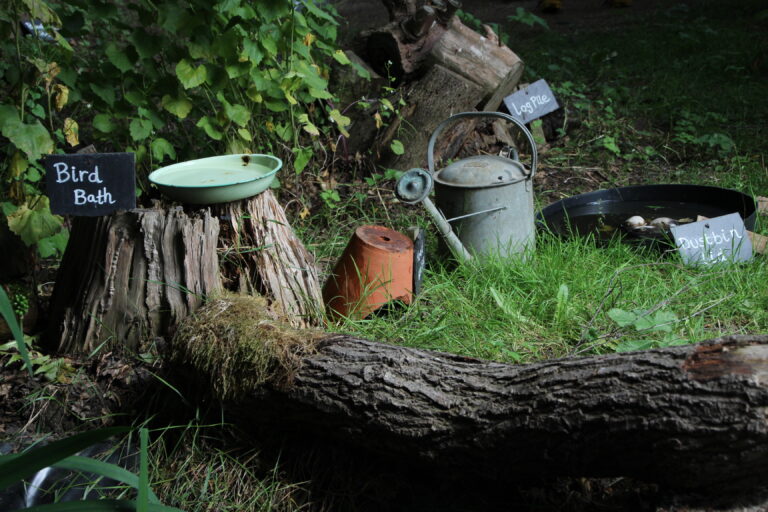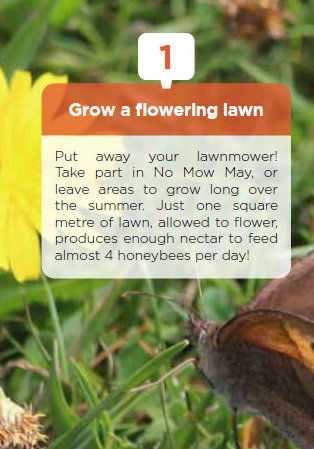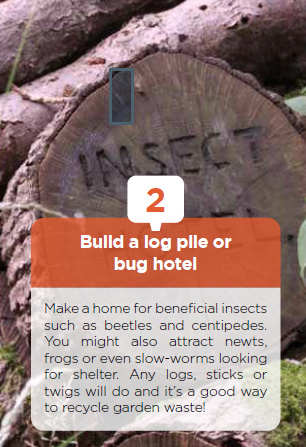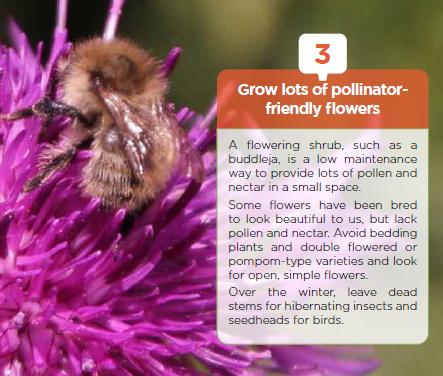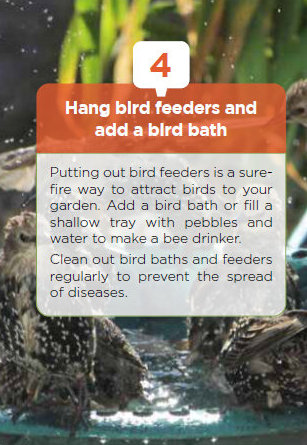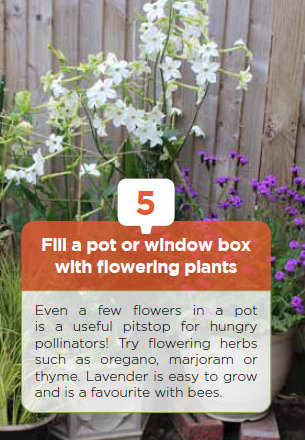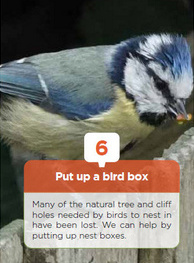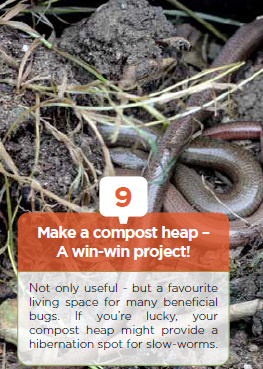 A Metre Square For Wildlife
A Metre Square For Wildlife
Could you ‘donate’ a metre square of your garden for wildlife? Birds, hedgehogs, frogs, butterflies, bees and other wildlife need connected habitats to find food and shelter, to breed and raise their young. Imagine if together we could create stepping stones for nature in our gardens throughout Seaford so that wildlife could thrive. Even the smallest space can make a difference!
Of course it doesn’t have to be a square metre!
You can ‘donate’ more than a metre – or even your whole garden! Here are 10 simple things you could do in your metre square. Or scroll down further to find our favourite books, websites and other resources to get started with wildlife gardening.
If you’d like us to add a resource, have an idea for this section, or have a story or photos about your own wildlife gardening experience please do get in touch – we’d love to hear from you! (Email: info@renaturingseaford.org)
Is your metre square:
- In a sunny aspect or a lawn? Choose 1, 3 or 7
- Shaded by trees or shrubs? Choose 2 4 8 or 9
- Part of a flower bed? Choose 3 or 7
- On a balcony or hard surface? Choose 4 or 5
- Planted with a mature tree? Choose 4 6 or 10
- Up a wall or fence? Choose 10 or 6
1) Grow a flowering lawn:
Put away your lawnmower! Take part in No Mow May, or leave areas to grow long over the summer. Just one square metre of lawn, allowed to flower, produces enough nectar to feed almost 4 honeybees per day! For more information on flowering lawns, take a look at Plantlife’s website by clicking here
2) Build a log pile or bug hotel:
Make a home for beneficial insects such as beetles and centipedes. You might also attract newts, frogs or even slow-worms looking for shelter. Any logs, sticks or twigs will do and it’s a good way to recycle garden waste! Buglife have lots of information on bug hotels and more – click here.
3) Grow lots of pollinator-friendly flowers:
A flowering shrub, such as a buddleja, is a low maintenance way to provide lots of pollen and nectar in a small space. Some flowers have been bred to look beautiful to us, but lack pollen and nectar. Avoid bedding plants and double flowered or pompom-type varieties and look for open, simple flowers. Over the winter, leave dead stems for hibernating insects and seedheads for birds.
Nursery owner Rosy Rollings has undertaken years of research to find out the best flowers for bees. You can also buy the plants online. Click here for Rosy’s website.
4) Hang bird feeders and add a bird bath:
Putting out bird feeders is a sure-fire way to attract birds to your garden. Add a bird bath or fill a shallow tray with pebbles and water to make a bee drinker. Clean out bird baths and feeders regularly to prevent the spread of diseases.
To find out more about bird baths, feeding birds, and where to place your bird feeder, take a look at Songbird Survival’s website
5) Fill a pot or window box with flowering plants:
Even a few flowers in a pot is a useful pitstop for hungry pollinators! Try flowering herbs such as oregano, marjoram or thyme. Lavender is easy to grow and is a favourite with bees.
6) Put up a bird box:
Many of the natural tree and cliff holes needed by birds to nest in have been lost. We can help by putting up nest boxes. You can buy or make your nest box. For a simple guide visit the RSPB website by clicking here.
7) Make a pond or mini pond:
One of the best things you can do to help wildlife is to add some water! Even an old washing up bowl sunk into the ground (with a log or brick for safe access) can attract dragonflies and damselflies.
For a mini pond guide, take a look at the RSPB website here. One of the best video guides we’ve found to make a wildlife pond is on Joel Ashton’s YouTube channel.
8) Create a Hedgehog habitat:
Hedgehogs are the gardener’s friend – slugs and snails are a delicious meal for them. Don’t use slug pellets, pesticides or herbicides – which can kill or harm hedgehogs and other creatures. Make a hole in your fence so that hedgehogs can move through to next door gardens. Download the Wildlife Trusts’ Get Creative For Hedgehogs leaflet to find out more.
9) Make a compost heap – A win-win project!
Not only useful – but a favourite living space for many beneficial bugs. If you’re lucky, your compost heap might provide a hibernation spot for slow-worms. To get started, take a look at the RSPB’s composting guide.
10) Grow climbing plants:
Climbers and wall shrubs provide shelter and food for birds, butterflies and bees. You might even get robins, blackbirds and wrens nesting. Many climbers will grow in a shady spot.
Getting started with wildlife friendly gardening: a list of our favourite resources and ideas
Books:
RSPB Gardening For Wildlife by Adrian Thomas. An excellent, all round, practical book, with plenty of well-researched and well-explained advice. If you only buy one book, buy this one!
Wildlife Gardening For Everyone and Everything by Kate Bradbury. Another good, all round introduction with plenty of practical advice.
Gardening For Bumblebees by Dave Goulson. Highly recommended if you want to know more about the amazing world of bees and other pollinators, alongside practical, reassuring advice from a leading expert.
Websites:
Sussex Wildlife Trust have straightforward information and an easy to navigate section about encouraging wildlife of all kinds. Butterfly Conservation advise about encouraging butterflies and moths to your garden, Buglife can show you how to welcome bugs of all kinds to your garden and The Bumblebee Trust have lots of great tips about gardening for bumblebees.
The Wildlife Gardening Forum aims to be a central point for science-based information about wildlife gardening. It also has a lively facebook group where knowledgeable experts will help with queries. Local group Greenhavens Network has information about their Wilder Gardens project as well as lots of useful guides on wildlife gardening.
TV and YouTube:
Gardener’s World ran a special episode on wildlife gardening – a very good place to begin if you’re just starting out with wildlife gardening.
Lots of organisations, such as Froglife, Buglife, The Wildlife Trusts have YouTube channels which include information on wildlife gardening. In addition, we particularly like Dave Goulson’s channel, and Joel Ashton’s channel. If you’re planning a wildlife pond we highly recommend Joel’s step-by-step guide.
Podcasts:
Ellie and Ben are professional wildlife gardeners, and produce the excellent Wildlife Gardening Podcast every month.
A Metre Square for Wildlife is a project from Seaford On The Verge and Seaford Environmental Alliance, originated and inspired by the late Cllr Jean Cash.
